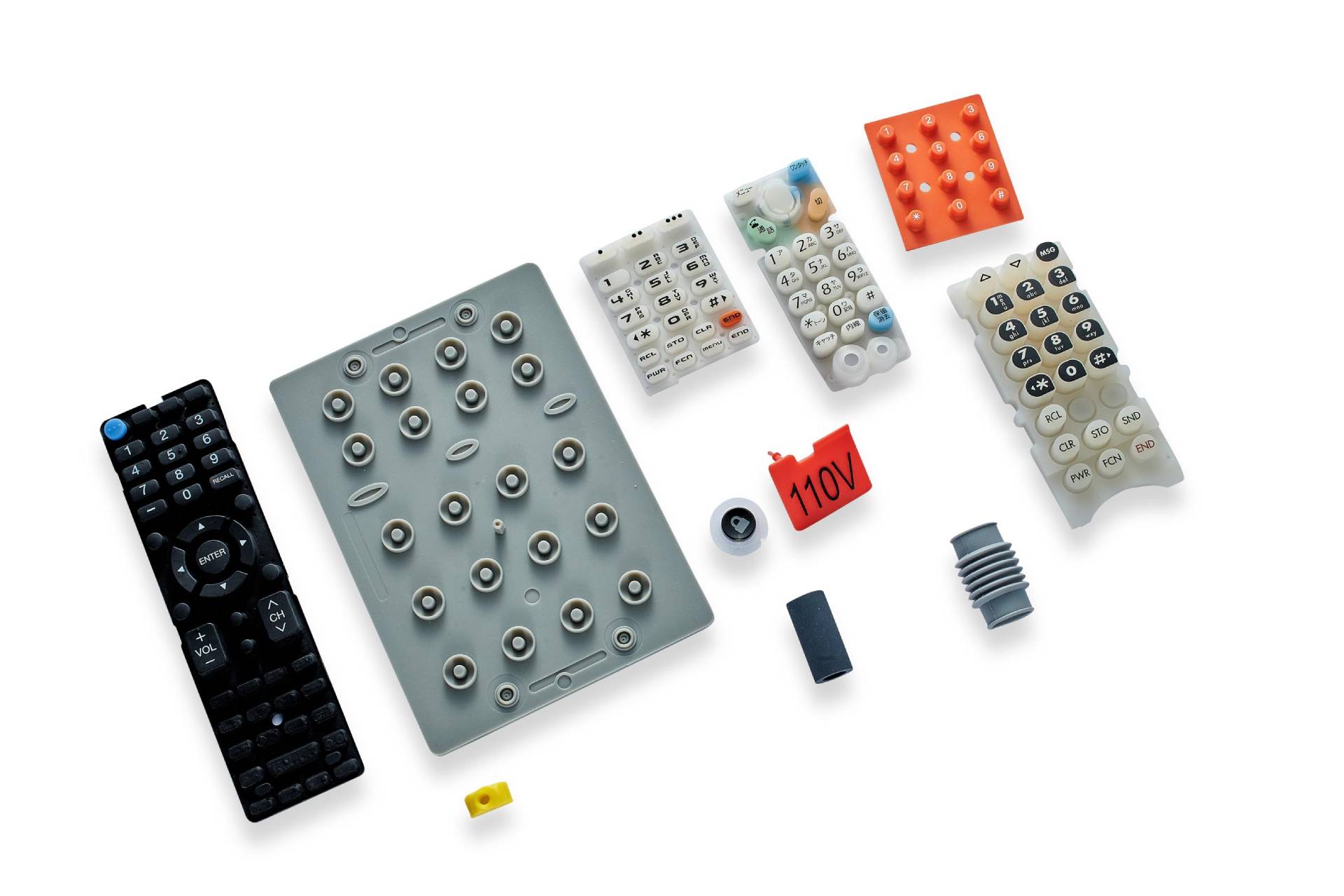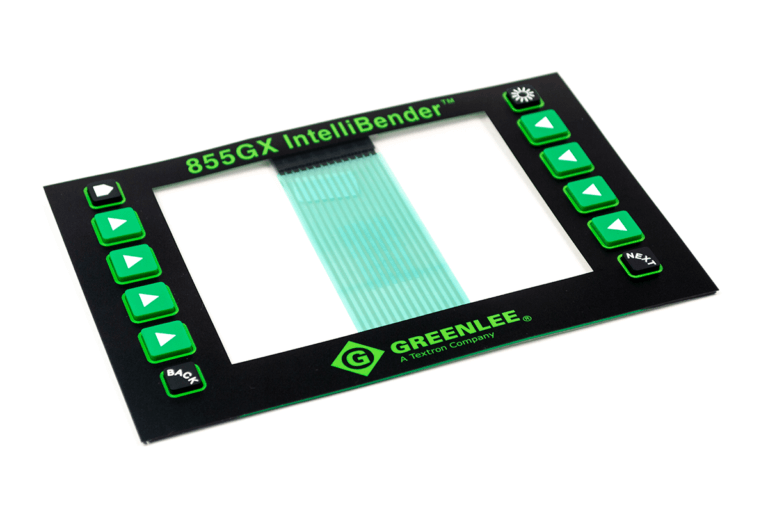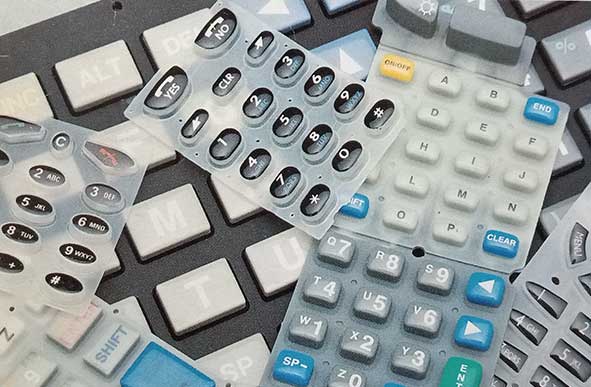Expert tips for improving the service life of Rubber Keypads
Exploring the Manufacturing Process Behind Rubber Keypads and Their Relevance in Modern Devices
Rubber keypads are crucial in the capability of contemporary tools. Their production process includes mindful choice of materials and specific methods. Keypads are designed to improve individual communication while making certain toughness and dependability. Understanding just how these components are made reveals their value across various applications. What variables add to their efficiency, and how do these elements influence user experience? The solutions may reshape assumptions of this everyday modern technology.
Introduction of Rubber Keypads and Their Applications

Rubber keypads are functional parts commonly made use of in various digital devices, varying from consumer electronic devices to industrial tools. Their design permits for a responsive reaction, making them an excellent option for applications calling for user interaction. Commonly located in products such as push-button controls, calculators, and clinical tools, rubber keypads promote ease of use and accessibility.
In industrial settings, they offer vital functions in machinery and control board, where longevity and resistance to ecological factors are necessary. The non-slip surface enhances grasp, promoting reliability popular problems. In addition, their light-weight nature and customizable shapes allow producers to create customized options that fit details needs. With innovations in modern technology, rubber keypads proceed to advance, integrating features like backlighting and enhanced level of sensitivity. Overall, their adaptability and practical benefits add greatly to the performance of various devices throughout numerous sectors.
Products Utilized in Rubber Keypad Production
Keypad manufacturing relies upon a selection of materials that boost both capability and sturdiness. The main product utilized in the production of rubber keypads is silicone rubber, understood for its exceptional resilience and versatility. This product allows keypads to stand up to duplicated pushing without shedding shape or performance. Furthermore, thermoplastic elastomers (TPE) are often used as a result of their ease of molding and capacity to offer a soft-touch feeling.
Tinting representatives, such as pigments, are incorporated to ensure dynamic, resilient tones that enhance aesthetic appeal. In addition, additives like anti-UV representatives and fire retardants might be combined right into the rubber to boost weather resistance and safety conformity. The option of products straight influences the keypad's responsive action, longevity, and general efficiency in numerous gadgets. Ultimately, the cautious choice of these components is essential for the production of top quality rubber keypads that meet customer and industry demands.
The Layout Refine of Rubber Keypads
When creating rubber keypads, the style process plays a vital role in establishing functionality and customer experience. Developers start by specifying the keypad's planned usage, thinking about variables such as the tool it will certainly come with and the target individual demographic. This initial stage consists of mapping out designs that prioritize ergonomic facets, making sure the secrets are easily accessible and properly spaced.
Next off, developers concentrate on the responsive feedback desired from the keypads, which influences the selection of materials and vital shapes. Prototyping is vital in this stage, enabling designers to evaluate various layouts for comfort and responsiveness.

Production Techniques for Rubber Keypads
The manufacturing process for rubber keypads involves a collection of precise strategies that assure top quality and functionality. Liquid silicone rubber (LSR) is usually used due to its durability and versatility. The procedure starts with blending the raw materials, including silicone, colorants, and healing representatives. This mix is then infused right into mold and mildews designed to shape the keypads precisely.
Adhering to injection, the shaped keypads undergo curing, a heating process that strengthens the product (Rubber Keypads). This is commonly executed in a press, making certain the keypads attain the desired solidity and strength

Top Quality Control Procedures in Manufacturing
To ensure that rubber keypads fulfill high requirements of top quality and functionality, strenuous quality assurance steps are applied throughout the production procedure. These steps begin with raw material assessment, making sure that just the highest-grade elastomers are utilized. During the manufacturing stage, operators conduct routine checks to keep an eye on parameters such as temperature, pressure, and mixing times, vital for accomplishing regular product quality.
Post-production, each set of keypads goes through thorough screening, consisting of responsive action analyses and longevity tests to review efficiency under various problems. Visual assessments are additionally performed to recognize any type of flaws, such as bubbles or variances in structure. Additionally, conformity with market standards is confirmed, making sure that the keypads meet security and performance criteria.
The Function of Modern Technology in Keypad Advancement
Technology plays a vital function in the growth of rubber keypads by allowing innovative production techniques that boost accuracy and performance. Furthermore, cutting-edge product choice permits boosted durability and responsiveness in keypad efficiency. These improvements not only streamline production yet likewise boost the overall quality of the final product.
Advanced Production Techniques
Innovations in production strategies transform the production of rubber keypads, enhancing both Find Out More efficiency and accuracy. Technologies such as shot molding and 3D printing have actually changed standard procedures, making it possible for suppliers to develop complicated layouts with decreased waste and enhanced turn-around times. Automation plays an essential duty in this development, improving assembly lines and decreasing human mistake. Furthermore, computer-aided style (CAD) software allows for elaborate personalization, making certain that keypads satisfy details user demands. Quality assurance steps have actually additionally advanced, integrating real-time surveillance systems that discover problems early in the production cycle. These technologies not only enhance the sturdiness and capability of rubber keypads but also sustain the expanding need for tailored services in different industries, from customer electronics to vehicle applications.
Cutting-edge Material Selection
The evolution of making strategies has actually led the way for cutting-edge product selection in rubber keypad advancement. Developments in polymer scientific research have presented products that enhance longevity, versatility, and responsive comments. Makers currently utilize polycarbonate elastomers (TPE) and silicone compounds, which supply superior resistance to use and environmental factors. These products permit the creation of keypads that can endure prolonged usage while maintaining aesthetic charm. In addition, the integration of finishings and additives improves performance, such as improving hold and minimizing friction. The option of materials is necessary, as it straight affects the performance and long life of keypads in numerous gadgets, from consumer electronic devices to commercial equipment. This innovative method remains to shape the future of keypad design and functionality.
The Influence of Rubber Keypads on Customer Experience
Rubber keypads considerably affect user experience through their enhanced tactile response, which permits more accurate interaction. Additionally, their longevity and durability add to regular efficiency with time, lowering the demand for constant replacements. This mix of functions makes rubber keypads a preferred option in numerous applications, inevitably influencing user satisfaction.
Enhanced Tactile Feedback
Enhancing responsive response substantially affects user experience, especially in tools that rely upon keypads for interaction. Rubber keypads give a distinct combination of softness and resilience, permitting customers to feel distinctive responses with each press. This responses enhances a sense of control and precision, vital in applications varying from smartphones to commercial tools. Users usually report higher contentment and performance when communicating with devices that include properly designed rubber keypads, as they promote quicker and much more exact input. In addition, the ergonomic design of these keypads can reduce finger exhaustion, advertising longer use periods without pain. On the whole, the boosted tactile action provided by rubber keypads considerably contributes to a much more satisfying and intuitive user experience in modern-day innovation.
Longevity and Longevity
A key aspect of customer experience with rubber keypads depends on their longevity and durability. These keypads are made to hold up against extensive usage, resisting deterioration that often influences various other materials. The durable nature of rubber assurances that keypads maintain their performance and look with time, which is important for tools regularly used in numerous settings. Users take advantage of the dependability of rubber keypads, as they can sustain direct exposure to temperature, wetness, and dirt fluctuations without degrading. This strength not only enhances customer complete satisfaction yet additionally reduces the need for regular replacements, inevitably adding to cost-effectiveness for producers. Basically, the toughness of rubber keypads significantly influences the total efficiency and individual experience in contemporary devices.
Regularly Asked Questions
The Length Of Time Do Rubber Keypads Usually Last in Devices?
Rubber keypads usually last between 5 to one decade, depending upon usage, ecological variables, and quality of materials used (Rubber Keypads). Routine wear and websites tear can shorten their lifespan, influencing performance and individual experience over time
Can Rubber Keypads Be Personalized for Specific Applications?
Rubber keypads can certainly be tailored for details applications, permitting modifications in dimension, structure, shape, and color. This adaptability makes it possible for producers to develop tailored solutions that satisfy varied user demands and enhance capability in different devices.
Are Rubber Keypads Ecologically Friendly?
Rubber keypads are frequently ruled out environmentally friendly because of their petroleum-based products. Developments in lasting manufacturing techniques and the development of bio-based alternatives are slowly boosting their environmental influence in different applications.
What Prevail Issues Encountered During Rubber Keypad Manufacturing?
Usual problems faced during rubber keypad manufacturing consist of irregular worldly quality, mold and mildew problems, improper curing times, bond failures, and obstacles in accomplishing specific responsive responses. These issues can cause decreased item efficiency and customer frustration.
Just How Do Rubber Keypads Contrast to Various Other Sorts Of Key Switches?
Rubber keypads use a softer feel and quieter operation contrasted to mechanical buttons, which provide tactile comments. However, rubber keypads might use out faster and do not have the precision that some customers prefer in high-performance applications.
The key product used in the manufacturing of rubber keypads is silicone rubber, known for its outstanding resilience and flexibility. When producing rubber keypads, the style process plays a necessary duty in identifying capability and user experience. Rubber keypads greatly affect user experience via their improved responsive action, which allows for more precise interaction. Customers usually report higher complete satisfaction and efficiency when engaging with tools that include well-designed rubber keypads, as they assist in quicker and much more exact input. sites A crucial element of customer experience with rubber keypads lies in their sturdiness and long life.